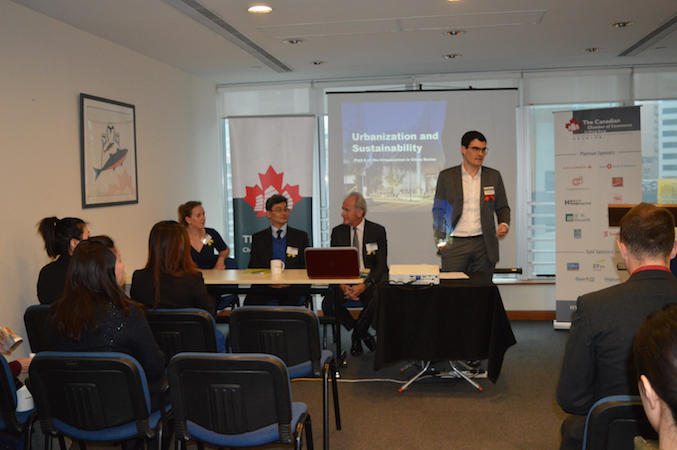Mar - Apr 2016
Urbanisation and sustainability—how to bring them together
March 6, 2016

On 21 January 2016, the Canadian Chamber of Commerce brought together three perspectives on sustainable buildings, including from an architect, a developer and an end user, sharing the various stages of their life cycles and impact on the environment.
In modern metropolises like Hong Kong, Singapore and Shanghai, the balancing act between urbanisation and sustainability continues to be both a challenge and an opportunity. Emerging architectural trends have transformed buildings to be Greener and more efficient, while maintaining profitability for the developer and motivation for end users in order to drive their willingness to pay a premium for Green buildings.
Robert Marshall, the principal and global director of planning and landscape at B+H Architects, brought a certain view of bringing urbanisation and sustainability together. He discussed about the importance of the triple bottom line—including social, financial and environmental aspects—and how this impacts various stakeholder groups. He brought this into the architectural context of sustainable buildings where design and performance represent the social aspect; savings and ROI for the financial aspect; and the reduction in emissions and energy usage for the environmental aspect. From his experience, it is about balancing the integration of sustainable
design and sustainable systems in order to yield a positive experience and progressive returns to organisations.
Andy Yeung, the head of technical services and sustainability at Hongkong Land Limited, provided his expertise in transforming sustainable initiatives to action. With a massive portfolio of buildings, Andy shared his insights on how a big sustainable goal can be achieved through small changes and actions by integrating sustainable systems throughout their portfolio of buildings. By introducing and investing in new technologies, this enhanced energy efficiency and enabled Hongkong Land to establish best-case practices throughout its operations. Transformations in technologies and systems that took place included lighting, elevators/escalators, cooling systems, restroom amenities, topsoil and a centralised monitoring centre. As a result of these small actions, Hongkong Land has already achieved savings of USD3.2 million, and future savings are seen to continually rise.
The last perspective that was explored was on the end users’ side, delivered by Susannah West, ESS director (South Asia) at Jones Lang LaSalle Limited. For the end users, Susannah revealed the tenants’ motivation and driving force for supporting sustainable buildings, particularly due to the benefits in cost and operations, organisational development and branding. On the cost and operations side, non-sustainable buildings are viewed to have more regulatory, market, physical and technological risks than sustainable buildings in the long run. Socially, employee health, productivity and well-being are enhanced due to increased daylight exposure and improved
air quality. Moreover, the organisational branding could communicate a strengthened commitment towards sustainability to its consumers, future employees and the community, increasing overall value for the stakeholders.
To read the complete article, get your hardcopy at our online shop/newsstands/major bookstores; subscribe to FuturArc or download the FuturArc App to read the issues!
Previously Published Happening
Contact us at https://www.futurarc.com/contact-us for older articles.

